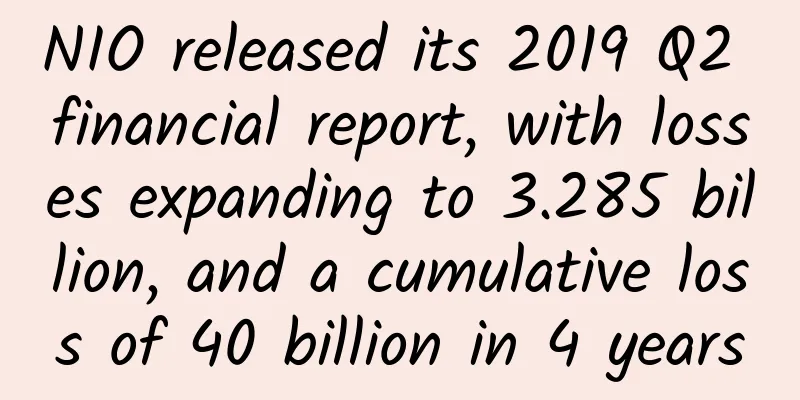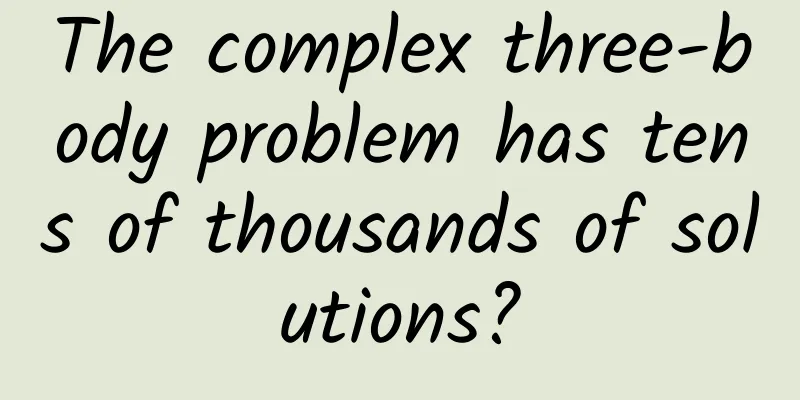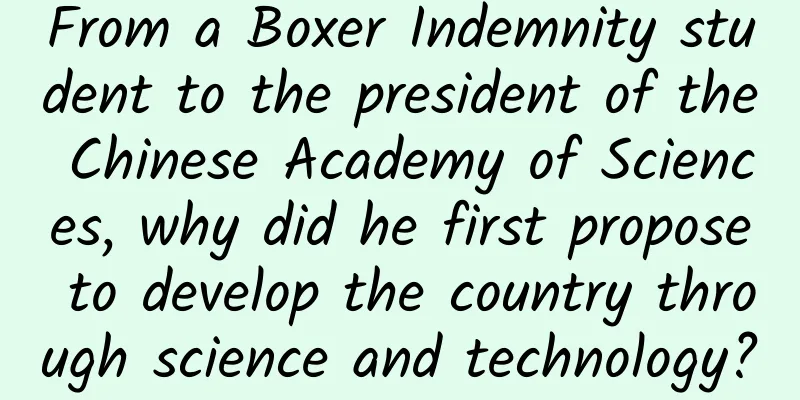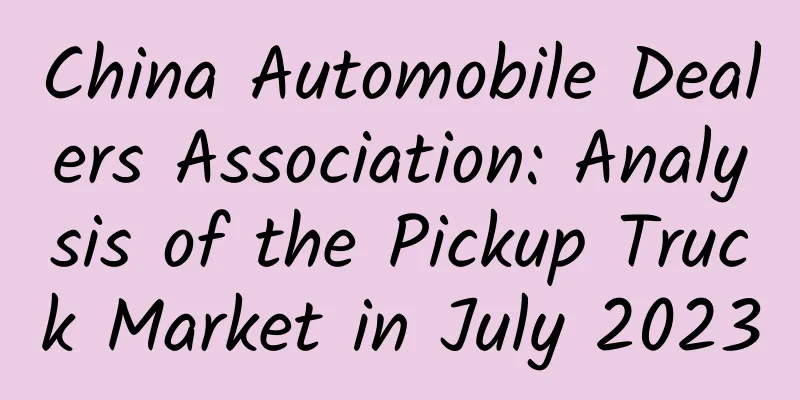Why is it said that the extended-range hybrid electric vehicle adopted by Ideal ONE is not suitable for the Chinese market?
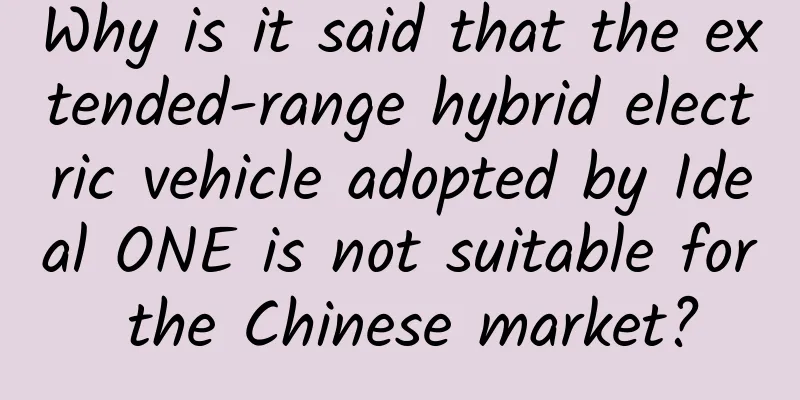
|
Recently, CHJ Ideal ONE was officially launched. This model is equipped with an extended-range electric drive system, with a comprehensive range of more than 700km and a range of more than 1,000km in urban conditions. Extended-range hybrid is a type of hybrid technology, but it is still an electric vehicle in essence. There are three main types of popular hybrid solutions: oil-electric hybrid, plug-in hybrid and extended-range hybrid. The extended-range type is the least popular route among the current hybrid technologies. Why did CHJ choose such an unpopular technology? Hybrid route battle Hybrid cars are cars that use electric motors as auxiliary power and do not have charging ports. The auxiliary generator gives fuel cars some of the advantages of electric cars, such as smooth power, stronger starting and acceleration, etc. In addition, hybrid cars can recover energy during deceleration and braking to reduce fuel consumption. Hybrid technology is difficult to develop, and the patents are mainly held by Toyota. It is difficult for other car companies to bypass Toyota's patents. my country's new energy vehicle development strategy is the most radical in the world, and it has always focused on pure electric vehicles. Charging facilities are the prerequisite for the promotion of electric vehicles. The Chinese government is trying hard to promote pure electric vehicles, but pure electric vehicles still have shortcomings in terms of endurance, so they have to support both pure electric and hybrid vehicles. Plug-in and extended-range hybrid vehicles can be charged externally and also require charging piles. Promoting plug-in hybrid and extended-range hybrid vehicles can drive the construction of charging piles and promote the promotion of pure electric vehicles. Hybrid vehicles do not require charging stations, and the patent is held by Toyota. Considering the needs of the development of the domestic automobile industry, the Chinese government will not subsidize hybrid vehicles. In May this year, the National Development and Reform Commission issued the "Automotive Industry Investment Management Regulations (Draft for Comments)", which classified plug-in hybrid vehicles into the category of fuel vehicles and extended-range hybrid vehicles into the category of electric vehicles. From this classification, we can see that plug-in hybrids are essentially fuel vehicles, and extended-range hybrids are essentially electric vehicles. Although the official classification of plug-in hybrids and extended-range hybrids is different, they are treated the same in terms of subsidy policies. Plug-in hybrids have both the engine, gearbox, transmission and other components of fuel vehicles and the battery, motor and control circuit of electric vehicles. The two systems can cooperate with each other or drive the car independently. Extended-range electric vehicles are electric vehicles that have a fuel engine added to them. The fuel engine does not directly drive the vehicle, but drives the generator to provide power to the motor and battery, thereby increasing the vehicle's range. At present, there are a large number of plug-in hybrid models available on the market, and most of them are domestic brands. However, apart from a handful of extended-range models, such as the Chevrolet Volt, BMW i3 (with optional extended-range module), Audi A1 e-tron, and Buick VELITE 5, the only model left is the unlisted Ideal ONE. Among domestic brands, BAIC New Energy, Brilliance Auto, and JAC also had research and development and prototype vehicles related to extended-range hybrid, but none of them were further introduced to the market. Why is extended-range electric vehicles unpopular? Both plug-in and extended-range electric vehicles can promote the promotion of pure electric vehicles, with the same subsidy amount and no significant difference in energy consumption. So why is the former growing and developing, while the latter is not welcomed by car companies? The most fundamental reason why the extended-range solution is unpopular is that it is more technically difficult and too costly. Plug-in hybrid is more of an integration of two systems: electric vehicles and fuel vehicles. It has good inheritance of existing technologies, so the development cost and difficulty are greatly reduced. There is also a lot of room for adjustment between the electric and fuel parts, which does not involve patent issues and can reflect the differences between different manufacturers. It is also because of this that domestic brands can quickly launch various plug-in hybrid vehicles and obtain relevant subsidies more quickly. The extended-range hybrid cannot be modified on an existing platform, but a new platform must be developed independently. The extended-range hybrid solution is separated from the support of the original engine and requires the development of an internal combustion engine specifically for power generation. The development cost of the extended-range hybrid is very high. Automakers need to have both fuel vehicle technology and pure electric vehicle technology, and they also need to make good connections between the two technologies. Although the principle of extended-range electric vehicles is simple, to truly realize it, car companies need to invest a lot of resources. Complex systems will also extend the car development cycle. Manufacturing and technology are not the strong points of CHJ Automotive, a new car manufacturer. Li Xiang was very courageous in choosing the extended-range hybrid as the power solution for Ideal ONE. Vicious cycle Due to the high development cost and long development cycle of extended-range hybrid, most car companies are unwilling to allocate limited resources to extended-range hybrid. If no one is doing it, there will be no related industrial supporting facilities, and the cost will be difficult to spread. Few people will also make the progress of extended-range hybrid technology slow. Although there is room for improvement in extended-range, if no one is exploring it, it cannot be converted into market value. If car companies don't invest, there will be fewer models on the market. Consumers will have fewer choices, which will affect their willingness to buy, and their awareness of the extended-range hybrid technology will be low. The high development cost makes the price of extended-range hybrid vehicles relatively high. For example, the pure electric BMW i3 has a 15% increase in price after becoming an extended-range model. After taking into account the subsidies, the final price of the extended-range hybrid has no advantage over the plug-in hybrid and electric vehicles. The high price of the extended-range hybrid makes consumers stay away from it. Extended-range hybrid may be a good technology, but it does not get the opportunity to prove itself. In this case, the only hope for extended-range hybrids is subsidies. At present, the subsidy standards for extended-range hybrids and plug-in hybrids are the same, and the government does not favor extended-range hybrids, which are more in need of support. From the perspective of policymakers, it is unrealistic to increase the subsidies for extended-range hybrid vehicles for the sake of a few companies like CHJ. Moreover, most of the extended-range hybrid vehicles on the market are not produced by domestic brands. The government has no motivation to subsidize them. For extended-range hybrids, the ideal subsidy standard is to be on par with electric vehicles. However, if extended-range hybrid technology and electric vehicles enjoy the same subsidies, it would be unfair to pure electric vehicles. Ideal ONE is expected to be officially delivered in the fourth quarter of 2019. Considering the procrastination of new car manufacturers, it is estimated that the final delivery time will only be later, not earlier. In other words, Ideal ONE will basically be launched in 2020. If there is no subsidy after 2020, and the government only relies on the double-credit policy to regulate the new energy vehicle market, then Ideal ONE is likely to get no subsidy at all. Plug-in hybrid and extended-range hybrid are actually just transitional products from fuel to pure electric. The Chinese government will eventually develop pure electric vehicles. Neither car manufacturers nor the government want to spend too much resources on a transitional product. Since there is a plug-in hybrid, which is a cheaper alternative for both manufacturers and consumers, why do we still need to make extended-range hybrid, which is a thankless task? Moreover, domestic brands of plug-in hybrids have already achieved scale and have an advantage in the domestic market. The government will not easily give up its support for plug-in hybrids. The counterattack of plug-in hybrid Due to the national policy inclination towards pure electric vehicles, the development speed of plug-in hybrid vehicles has long been lower than that of pure electric vehicles. However, this year, plug-in hybrid vehicles have made a comeback. From January to August this year, the monthly year-on-year growth rate of plug-in hybrid vehicles has always been higher than that of pure electric vehicles. This shows that consumers are increasingly considering the practicality of new energy vehicles, rather than just focusing on the license plate. In mature automobile markets such as Europe and the United States, the market ratio of pure electric and plug-in hybrid is roughly 1:1. In China's current new energy vehicle market, the market ratio of pure electric and plug-in hybrid is about 2.3:1. There is still a lot of market space for plug-in hybrid in China. In cities such as Beijing, Hefei, and Zhengzhou, where policies favor pure electric vehicles, pure electric vehicle sales account for more than 90% of total new energy vehicle sales. In cities such as Shenzhen and Shanghai, which are more friendly to plug-in hybrid vehicles, the market share of plug-in hybrid vehicles far exceeds that of pure electric vehicles. This shows that if policies are fair, plug-in hybrid vehicles will have better development. As the country's subsidies for new energy vehicles gradually weaken, the policy advantages of pure electric vehicles will be further weakened, and the advantages of plug-in hybrids will become more obvious. This year, BYD, SAIC Roewe, Geely and other brands have begun to reap the benefits of plug-in hybrids. This will encourage more car companies to put resources into plug-in hybrids, and the thankless extended-range will continue to be neglected. Domestic brands have already invested a lot in plug-in hybrids and will not rashly abandon the plug-in hybrid route. Moreover, plug-in hybrids have already started to make money, so there is no need to wade into the muddy waters of extended-range electric vehicles. Li Xiang does not suffer any loss However, the bleak prospects of the extended-range technology route cannot determine the success or failure of Ideal ONE. In fact, Ideal ONE's competitors are not plug-in hybrid vehicles, but a number of pure electric vehicles. The extended-range solution will increase the cost of the car and home, but it will add points in terms of battery life. After all, Ideal ONE's 700km battery life is much better than Weilai's power bank. Ideal ONE is expected to be priced at less than 400,000 yuan, and its competitors are Tesla Model X and Lexus RX450h. In fact, the extended-range hybrid can only have a chance of survival if it enters the luxury car market, because only luxury car consumers will not care too much about energy consumption and price. CHJ can make up for the cost disadvantage of extended-range hybrid by the brand premium brought by smart cockpit and autonomous driving. CHJ said that Ideal ONE will adopt an interactive mode combining multiple screens and full-vehicle voice, and also has an L2.5 autonomous driving system. However, CHJ still faces severe competition. By the time CHJ goes public, the luxury electric car market will be much more crowded than it is now. 2020 is a turning point, and luxury car brands such as BBA will also launch electric cars in this price range. Li Xiang's Ideal ONE still has a chance, but the extended-range hybrid is not suitable for the Chinese market. As a winner of Toutiao's Qingyun Plan and Baijiahao's Bai+ Plan, the 2019 Baidu Digital Author of the Year, the Baijiahao's Most Popular Author in the Technology Field, the 2019 Sogou Technology and Culture Author, and the 2021 Baijiahao Quarterly Influential Creator, he has won many awards, including the 2013 Sohu Best Industry Media Person, the 2015 China New Media Entrepreneurship Competition Beijing Third Place, the 2015 Guangmang Experience Award, the 2015 China New Media Entrepreneurship Competition Finals Third Place, and the 2018 Baidu Dynamic Annual Powerful Celebrity. |
<<: It understands everything you say, AliOS upgrades scene intelligent semantic understanding
Recommend
1-year-old baby's fingers burned black instantly! Don't touch this place, it's too dangerous →
It is the nature of children to be active But par...
What are the pitfalls of Internet finance CPS?
“Is there any CPS channel that doesn’t fake traff...
There is no Yang now, what's going on? Maybe there really is a "chosen one"!
On December 30, the Sichuan Provincial Center for...
Double heartache: Does belly fat affect the brain?
Review expert: Yin Tielun, deputy chief physician...
Survey shows only 5% of consumers are interested in buying a Fire Phone
At present, the competition in the smartphone mar...
Are aliens really here? Scientists make shocking statement: There is alien technology in the Pacific Ocean!
The claim that "aliens" left technology...
Six techniques for attracting traffic from Weibo in the medical beauty industry
Recently, when I was communicating with some boss...
How much does it cost to produce the Hanzhong Aquatic Products Mini Program? How much is the price for producing Hanzhong Aquatic Products Mini Program?
The main factors affecting the price of mini prog...
This is the most awesome operational copywriting I have ever seen!
As a public account editor with less than 100 mil...
How do you make and receive satellite calls? Tiantong-1 satellite comes to your rescue
Tiantong satellite phone can be used as a common ...
The "Silent Killer" Under the Deep Sea——Deep Sea Pre-placed Weapons
Editor's note: The bombing of the Nord Stream...
China: The country of thousands of islands!
How many islands are there in China? According to...
Maximizing the value of the supply chain LePar is not a simple O2O
In the era of Internet TV, LeTV, which uses both ...
"Every additional CT scan increases the risk of cancer by 43%" has become a hot topic! Should CT scans still be performed?
"For every additional CT scan, the risk of c...
Domestic operating systems: How can small companies with only a few hundred employees compete?
On March 31, Ni Guangnan, an academician of the C...



